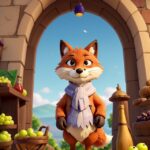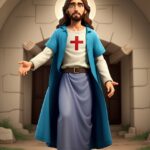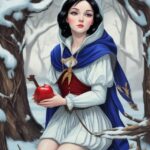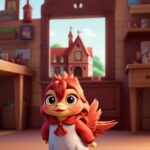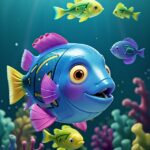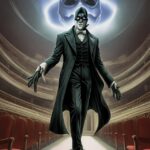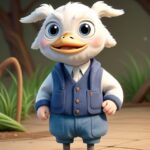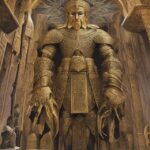Welcome, dear readers, to an astonishing journey into one of the most thought-provoking and timeless adventure literary masterpieces of our time. “Lord of the Flies” by renowned author William Golding has captivated millions since its publication in 1954, leaving an indelible mark on the world of literature. This gripping novel transcends generations with its poignant exploration of human nature and the tumultuous struggle between civilization and savagery
Set against the backdrop of a desolate tropical island, “Lord of the Flies” delves deep into the minds of a group of British schoolboys stranded after a catastrophic plane crash. As the days turn into weeks, the veneer of society begins to crumble, and hidden desires, primal instincts, and deeply ingrained fears unravel the boys’ collective consciousness.
Join us as we embark on an exploration of this literary masterpiece, delving into the depths of its narrative, characters, and themes. Shedding light on the acclaimed symbolism and allegory intertwined within its plot, we will unravel the complex layers of meaning and draw connections to the depths of human society.
Lord of the Flies by William Golding: Full Book Summary
Once upon a time, on a deserted island, a group of British schoolboys found themselves in a rather peculiar situation. The story begins with a plane crash leaving them stranded, with no adults to help them. This thrilling adventure is brought to life in the classic novel “Lord of the Flies” written by William Golding.
The boys soon realize that there are no grown-ups present to guide them, and they must learn to survive on their own. Ralph, a fair-haired and charismatic boy, rises up as their leader. He is joined by his loyal friend, Piggy, who is smart and wears glasses. Together, they gather the remaining boys and establish some rules and order to maintain a sense of civilization.
With the conch shell in hand, Ralph calls a meeting and explains the importance of rules and the need for rescuers to come to their aid. The boys all agree and elect Ralph as their chief. They establish the conch as a symbol of authority and agree that only the one holding it can speak during their meetings.
Things seem to be going well until a group led by Jack Merridew, a strong-willed and wild boy, separates from Ralph’s group and forms their own tribe. They choose to hunt and have wild feasts rather than focus on building shelters and maintaining the signal fire. Jack’s tribe starts painting their faces to camouflage themselves during the hunts, giving themselves a savage appearance.
As time goes by, the boys’ behavior starts to change. The freedom of being on the island with no adults begins to have a negative influence, and they begin to forget the importance of rules and civilization. They indulge in hedonistic activities without considering the long-term consequences.
One of the most memorable characters in the book is Simon, a quiet and thoughtful boy. He spends his time exploring the island and discovering its hidden secrets. One day, while deep in the forest, Simon has a mystical encounter with a pig’s head mounted on a stick. This pig’s head, which they call the “Lord of the Flies,” seems to speak to him, revealing the darkness and evil that lies within the boys.
As the boys’ descent into savagery continues, tensions rise between Ralph and Jack. Jack uses fear and manipulation to gain control over the boys, offering them protection from the mythical beast they believe lurks on the island. The once civilized boys slowly turn into a wild tribe, painted and armed, to the point that they even kill a mother pig during a violent feast.
Meanwhile, Ralph and Piggy desperately try to maintain a sense of order and morality. Piggy represents rationality and intellect while Ralph remains the voice of reason. They believe that keeping the signal fire burning is their only hope for rescue. However, the boys become more interested in hunting and savage rituals than getting off the island.
The tension between Ralph and Jack eventually reaches a boiling point when Jack’s tribe steals Piggy’s glasses, the only means of starting a fire. Piggy, outraged, confronts Jack, but in a moment of madness, Roger, a follower of Jack, pushes a boulder off a cliff, aiming towards Piggy. Unfortunately, the boulder strikes Piggy, killing him instantly, and shattering the conch shell, symbolizing the complete breakdown of civilization and order.
In a final act of chaos and savagery, Jack’s tribe hunts down Ralph, who is now alone and defenseless. As they chase him through the forest, Ralph stumbles upon the dead pilot’s parachute, and a ray of hope emerges. He realizes that he can use it to disguise himself from the hunters.
Just as it seems all hope is lost, a naval officer appears on the beach. The boys, caught up in their frenzy and painted faces, stop and stare at the officer in disbelief. The officer, unaware of the profound changes that took place on the island, is shocked by their appearance and actions. He expected a civilized group of boys, but instead, he finds a group of savage children.
Realizing the primal nature of the boys’ behavior, Ralph breaks down and weeps, mourning the loss of innocence and the chaos they devolved into. The officer tries to console him, reassuring him that they will all go back home, but Ralph weeps for the dark nature he has witnessed within himself and the others.
“Lord of the Flies” provides a powerful allegorical tale that explores the inherent capacity for evil within humanity. Through the vivid depiction of these young boys’ journey, William Golding challenges us to reflect on the delicate balance between civilization and savagery that exists within each person. It serves as a reminder that it is our choices, and the rules we choose to follow or break, that ultimately shape the world we live in.
Lord of the Flies: Key Themes
“Lord of the Flies” is a classic novel written by William Golding and published in 1954. It tells the story of a group of young boys who survive a plane crash on a deserted island, and their struggle to create a society without adult supervision. The book explores various themes, but three key themes that stand out are the inherent evil in human nature, the loss of innocence, and the conflict between civilization and savagery.
The first theme, the inherent evil in human nature, is powerfully presented throughout the novel. As the boys find themselves stranded on the island, they initially attempt to establish order and create a disciplined society. However, as time goes by and the boys struggle to survive, their inherent human instincts begin to take over. The novel demonstrates how the absence of authority and rules can unleash the darker side of human nature, leading to violence, fear, and the gradual breakdown of civilization. The character of Jack represents this descent into savagery as he forms a tribe obsessed with hunting and violence, eventually leading to the tragedy and destruction on the island.
The loss of innocence is another prominent theme in the book. The boys, initially seen as innocent and naive, gradually become corrupted by their experiences on the island. They are no longer protected by the rules and structures of society, and without adult guidance, they start to indulge in their wild instincts. This loss of their childlike innocence is symbolized by the transformation of the boys, especially their physical appearance and behavior. The descent into savagery and the horrific acts they commit show the loss of their innocence and the tragic consequences of growing up in a cruel and uncaring world.
Lastly, the conflict between civilization and savagery is a central theme explored in “Lord of the Flies”. The boys’ struggle to form a functioning society reflects the tensions between the desire for order and the allure of chaos. While Ralph represents the rational and organized side, advocating for rules and democracy, Jack represents the complete opposite, embracing anarchy and violence. The conflict between the two characters reflects the larger conflict between civilization and savagery that exists within each individual. The book suggests that in the absence of societal structures, the inherent savagery in human nature will prevail.
In summary, “Lord of the Flies” delves into the darker aspects of human nature while exploring themes such as the inherent evil in human nature, the loss of innocence, and the conflict between civilization and savagery. The book serves as a cautionary tale, highlighting the fragility of human society and the potential for darkness within us all.
Lord of the Flies: Characters
1. Ralph:
Ralph is the charismatic and natural-born leader of the group. With his fair hair and athletic build, he exudes an air of confidence that draws the others towards him. He is often seen donning a makeshift crown, proudly representing his status as the elected chief. Despite his initial enthusiasm for civilization and order, Ralph slowly reveals a mischievous side, often sneaking off to indulge in his guilty pleasure of stealing fruit from the tropical trees.
2. Jack:
Jack, with his angular face and fiery red hair, is the embodiment of primal instincts and rebellion. His obsession with hunting leads him to abandon the group’s original mission of being rescued in favor of becoming a ruthless hunter. Jack’s transformation into a savage is marked by his decision to paint his face with war-like tribal colors, leaving behind his trademark freckles. He occasionally finds solace in playing the spoons, much to the bewilderment of his fellow stranded companions.
3. Piggy:
Piggy, the intellectual and logical thinker, is best summed up by his rumbling tummy and round spectacles perched precariously on his pug-like nose. Despite his unfortunate nickname, Piggy’s stout and hefty presence is a symbol of unwavering reason amidst chaos. He spends most of his time meticulously organizing the inventory, ensuring that the group has enough supplies to survive. However, his constant asthmatic wheezing can be a source of amusement for the others during moments of tranquility.
4. Simon:
Simon is the enigmatic and introspective member of the group, often lost in deep thoughts and contemplation. His frail frame and wispy hair make him appear almost otherworldly. Simon is known for his unyielding compassion towards smaller creatures, often stepping in to rescue insects and protect them from harm. He has a peculiar habit of humming tunes to himself, serenading the wind with melodies that only he can hear.
5. Roger:
Roger, the dark and brooding member, is hulking in stature and carries an air of danger around him. His jet-black hair, slicked back in a sinister manner, adds to his devilish aura. Roger is notorious for his tendencies towards cruelty, often using his newfound power to inflict pain on smaller members of the group. He has a unique knack for throwing stones with uncanny precision, an eerie talent that never fails to spark fear in the hearts of his companions.
6. Sam and Eric (The Twins):
Sam and Eric, the inseparable twins, epitomize a unity that can only be found in each other. Despite often being mistaken for one another, the similarities end at their appearance. Sam, distinguished by his perpetually tousled hair, is the more talkative and mischievous one, always ready with a witty remark. Eric, with his slightly larger frame and dimples, is the calmer and more reflective twin, finding solace in quietly observing their surroundings. They share a fondness for coconut gathering expeditions, often engaging in friendly competitions to see who can climb the tallest tree.
Through their unique personalities and physical attributes, the characters in “Lord of the Flies” create a tapestry of humanity and showcase the complexities of survival, leadership, and the inherent nature in each of us.
Lord of the Flies: Symbols
1) The conch shell: The conch shell is a powerful symbol of order and civilization throughout the novel. It is initially used to gather the boys together and establish a democratic system of leadership, as whoever holds the conch shell has the right to speak. As the story progresses and the boys descend into savagery, the importance of the conch shell diminishes, symbolizing the decline of civilization and descent into chaos.
2) The Beast: The Beast is used to represent the innate wickedness and darkness within human nature. In the beginning, the boys’ fear of the beast is an external fear, as they believe it is a physical creature lurking on the island. However, as the story progresses, the beast becomes a symbol of the dark impulses within the boys themselves. It represents their descent into savagery and the loss of their connection to civilized society.
3) The Lord of the Flies: The Lord of the Flies is a severed pig’s head that is mounted on a stick as an offering to the Beast. It functions as a physical manifestation of the evil and darkness that resides within the boys. The talking head, which speaks to Simon in a hallucination, reveals the boys’ inner nature and their capacity for violence. It represents the power of fear and the corruption of power, ultimately demonstrating the destructive potential of unchecked human nature.
Lord of the Flies: Culture Impact
Lord of the Flies, penned by British author William Golding, has undoubtedly left an indelible mark on both literature and popular culture since its initial publication in 1954. This provocative and haunting novel explores the inherent savagery that lies beneath the veneer of civilization, and its impact on culture cannot be understated.
Historically, Lord of the Flies emerged during a time of global post-war disillusionment. Its release coincided with a shifting societal perspective, as nations were grappling with the horrors of World War II and its aftermath. Golding’s narrative tapped into these collective anxieties, reflecting the darker aspects of human behavior that were revealed during times of crisis.
With its timeless depiction of the descent into chaos and the loss of societal order, Lord of the Flies has become a symbol of the fragility of civilization. The book serves as a stark reminder of the potential darkness that lurks within humanity, prompting readers to reflect upon their own capacity for moral degradation. Its impact resonates across generations, as the themes explored remain relevant in a modern world grappling with its own social and political challenges.
Moreover, Lord of the Flies has spawned a plethora of cultural references and adaptations. The novel has inspired numerous films, stage productions, and artistic interpretations, cementing its place in the pantheon of literary classics. Its influence extends beyond the realm of literature, infiltrating popular culture with references in television shows, music, and even video games, further amplifying its impact on the collective consciousness.
But it is not only the gravitas of its themes that has contributed to Lord of the Flies’ cultural impact; the book also boasts moments of dark humor amidst its somber narrative. Golding masterfully interweaves comedic elements, providing relief from the tension and allowing readers to grapple with the weightiness of the story. These moments of levity serve as reminders that even in the bleakest circumstances, there is room for human nature’s paradoxical mix of folly and resilience.
Finally, the achievements of Lord of the Flies lie not only in its ability to captivate readers, but also in its lasting legacy as a work that challenges societal norms. Golding’s novel forced readers to confront uncomfortable truths, questioning the fragile structures that hold civilization together. By depicting the potential for evil and violence within human nature, the book sparked conversations about the nature of power, authority, and the moral responsibility of individuals in society.
In conclusion, Lord of the Flies is a literary masterpiece that has left an enduring cultural impact. Through its exploration of the darkness within humanity, its moments of levity, and its unwavering ability to provoke thought and reflection, this book has shaped our understanding of civilization, morality, and the potential for both triumph and tragedy within society.
FAQs
1. What is the main theme of Lord of the Flies?
The main theme of Lord of the Flies is the conflict between civilization and savagery. The novel explores how civilization can easily collapse under the pressure of fear and human nature’s darker instincts.
2. Who are the main characters in Lord of the Flies?
The main characters in Lord of the Flies are Ralph, Jack, and Piggy. Ralph represents order and democracy, Jack represents authoritarianism and savagery, while Piggy symbolizes intellect and rationality.
3. What is the “beast” in Lord of the Flies?
The beast is a term that the boys use to refer to their fear of the unknown and the dark. The beast is not a real creature, but a projection of the boys’ imagination, influenced by their nightmares and paranoia. The beast also represents the evil and violence that lurks within each human being, and that can be unleashed when there is no civilization or morality to restrain it. The beast is manifested in different forms, such as the dead parachutist, the pig’s head, and the Lord of the Flies.
4. Why is the conch shell significant in Lord of the Flies?
The conch is a shell that Ralph and Piggy find on the beach, and use as a horn to call the other boys. The conch symbolizes democracy, law, and order, as the boys agree that whoever holds the conch has the right to speak and be heard. The conch also symbolizes civilization and culture, as it reminds the boys of their connection to the outside world. However, the fact that the conch is easily broken, signaling the end of civil communication and the rise of anarchy, symbolizes the fragility of democracy, which needs protection by all participants in order to survive.
5. What is the significance of the ending in Lord of the Flies?
The ending of Lord of the Flies is significant as it showcases the complete breakdown of civilization and the triumph of savagery. The arrival of the naval officer reminds the boys of the civilized world they left behind, highlighting the stark contrast between the two and the devastating consequences of their descent into savagery.
6. What is the main message of Lord of the Flies?
The main message of Lord of the Flies is that human nature is inherently evil, and that without the restraints of civilization and morality, people will descend into savagery and violence. The novel shows how a group of boys stranded on a deserted island gradually lose their sense of order, rationality, and compassion, and become divided into two hostile factions that fight for power and survival. The novel also criticizes the hypocrisy and corruption of the adult world, which is engaged in a nuclear war.
7. What is the significance of the novel’s opening line?
The novel’s opening line introduces the main characters, Ralph and Piggy, and their situation, which is that they have survived a plane crash and landed on an uninhabited island. It also sets the tone for the rest of the story, which is a mixture of adventure and horror, realism and allegory, and innocence and corruption. The opening line also foreshadows the themes of the novel, such as leadership, power, fear, and violence.
8. Why does Jack paint his face?
Jack paints his face with red and white clay to create a mask that hides his identity and unleashes his inner savage. He does this because he wants to hunt and kill pigs, and he thinks that the mask will make him more fierce and fearless. He also thinks that the mask will protect him from the beast, which he believes is a real creature that lurks on the island. The mask represents Jack’s loss of civilization and morality, and his embrace of savagery and violence.

